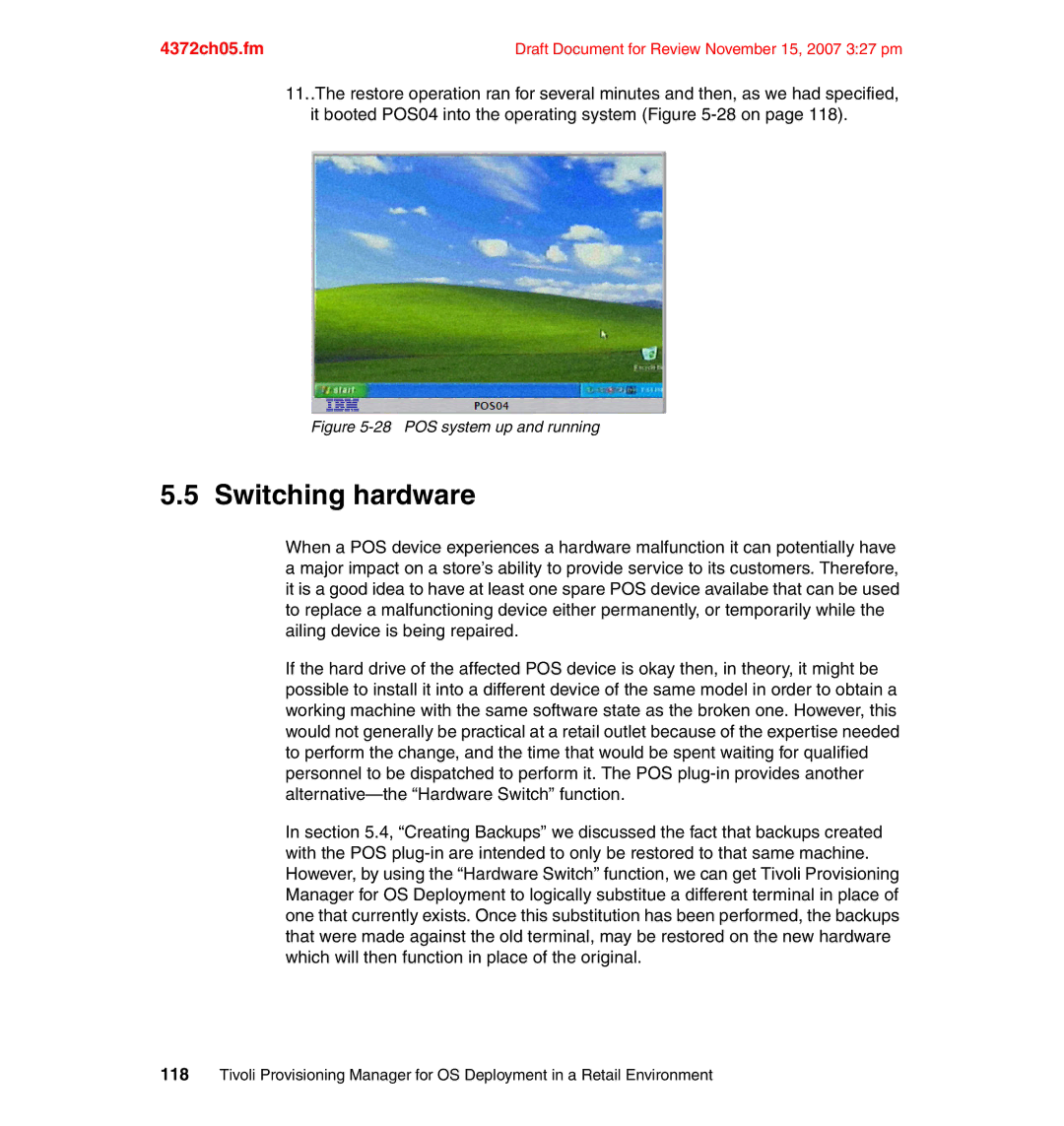
4372ch05.fm | Draft Document for Review November 15, 2007 3:27 pm |
11..The restore operation ran for several minutes and then, as we had specified, it booted POS04 into the operating system (Figure
Figure 5-28 POS system up and running
5.5 Switching hardware
When a POS device experiences a hardware malfunction it can potentially have a major impact on a store’s ability to provide service to its customers. Therefore, it is a good idea to have at least one spare POS device availabe that can be used to replace a malfunctioning device either permanently, or temporarily while the ailing device is being repaired.
If the hard drive of the affected POS device is okay then, in theory, it might be possible to install it into a different device of the same model in order to obtain a working machine with the same software state as the broken one. However, this would not generally be practical at a retail outlet because of the expertise needed to perform the change, and the time that would be spent waiting for qualified personnel to be dispatched to perform it. The POS
In section 5.4, “Creating Backups” we discussed the fact that backups created with the POS
118Tivoli Provisioning Manager for OS Deployment in a Retail Environment
